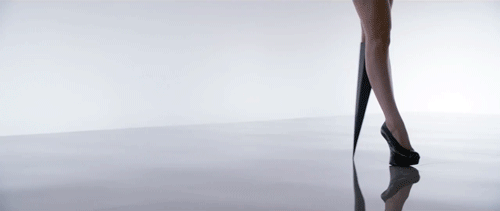
Go Back Go Back Go Back Go Back Go Back Go Back Go Back Go Back Go Back Go Back Go Back Go Back Go Back Go Back
Viktoria Modesta Viktoria Modesta Viktoria Modesta Viktoria Modesta Viktoria Modesta Viktoria Modesta Viktoria Modesta Viktoria Modesta Viktoria Modesta Viktoria Modesta Viktoria Modesta
Music Video Music Video Music Video Music Video Music Video Music Video Music Video Music Video Music Video Music Video Music Video
From The Guardian:
At the age of 15, Viktoria Modesta decided it was time to lose her lower left leg, but it took her another five years to convince a surgeon to do it. “Building an identity that I was more comfortable with, as opposed to the one that was given to me, was very important,” she says. She describes the surgery as a literal severing of the thing that was holding her back, as if it were a cord tethering her to the ground. It was, she says, eyes widening under the brim of her glossy black cap, “a new moment. I genuinely felt I had a life as a new person. I upgraded my opportunities, my comfort, my body. It was really empowering”.
Modesta is being championed by Channel 4 as the “world’s first amputee pop artist”. Her music video for her song Prototype – “I’m the model of the future,” she sings – which the channel funded and paid to air in an ad break during the X Factor final on Sunday, has received more than 10m views on the Channel 4 website, and another 1.5m on YouTube. For all that Modesta already looks like a pop star – she is beautiful, with delicate features, and radiates a serene confidence – the video, which carries the channel’s “Born Risky” tagline, celebrates her physical difference. She wears different prosthetics: one a sparkling diamante-covered leg, another a fierce, glossy spike that makes no attempt to resemble a human limb. Perhaps even more powerful – for those of us still unused to seeing images of disability, especially in pop culture – is one particularly sexy scene in which Modesta’s natural leg is on show, the lower part missing below the knee.
 Following their successful Paralympic Games coverage, Channel 4 had been looking at the opportunities for people with disabilities in areas away from sport, and approached Modesta with the idea of making a video. Long a presence on the club scene and a performer (she appeared at the Paralympics closing ceremony), she released her first single in 2012, but had been largely ignored by the music industry. “Before, there was a lot of concern about how much investment I would need, because I was representing this glossy, polished image, and there were so many factors that didn’t fit boxes,” she says. “I had an alternative background, I used to do alternative modelling and people felt a bit scared about it. The leg thing was just … I saw a lot of blank faces where people kind of went: ‘I don’t know what I’m supposed to say about this. Is it right for me to think that you’re cool and hot?’”
Following their successful Paralympic Games coverage, Channel 4 had been looking at the opportunities for people with disabilities in areas away from sport, and approached Modesta with the idea of making a video. Long a presence on the club scene and a performer (she appeared at the Paralympics closing ceremony), she released her first single in 2012, but had been largely ignored by the music industry. “Before, there was a lot of concern about how much investment I would need, because I was representing this glossy, polished image, and there were so many factors that didn’t fit boxes,” she says. “I had an alternative background, I used to do alternative modelling and people felt a bit scared about it. The leg thing was just … I saw a lot of blank faces where people kind of went: ‘I don’t know what I’m supposed to say about this. Is it right for me to think that you’re cool and hot?’”
Modesta’s emergence shouldn’t be anything out of the ordinary. The Paralympics, after all, were supposed to help society get better at understanding that people with disabilities are as capable of remarkable things as anyone else. And yet seeing her presented not as a challenge to the glamour of the entertainment world, but as an extension of it, still feels surprising. Her primetime presence raises several questions. Judging by the attention the Paralympics received, we’re happy to be inspired by people with disabilities, in the often cliched triumph-over-adversity mould, but are we ready to allow someone’s disability to be considered simply one part of their identity? Are we ready for them to be superstars? Are we ready for them to be sexy?
We certainly should be, says Modesta. The idea that people with a disability can’t be alluring, she says, is “totally unacceptable. I’m sure there are people who don’t feel that way, but there are definitely a lot of people who do. That’s why in the video I made every point of pushing my sexuality to the level that I’m comfortable with. It isn’t about being objectified and trying to please a male audience; it’s about representing a sexuality that I felt good about.”
 Making the video has been as eye-opening for her as it is for its audience. It was only fairly recently – perhaps six months ago, she says – that she still worried what people thought about her, and what the reaction would be. “After the conversations I had with Channel 4, and seeing how they saw me, I understood that a lot of the complexes I had was the final rubbish that was stopping me from being happy.” During filming with director Saam Farahmand – who has made videos for Mark Ronson, the XX and Cheryl Fernandez-Versini – she says: “I wasn’t self-conscious, I wasn’t thinking about what anyone else would say. All I could do was concentrate on presenting myself as honestly and as passionately as possible, and if someone doesn’t like that, then you’re never going to win them over.”
Making the video has been as eye-opening for her as it is for its audience. It was only fairly recently – perhaps six months ago, she says – that she still worried what people thought about her, and what the reaction would be. “After the conversations I had with Channel 4, and seeing how they saw me, I understood that a lot of the complexes I had was the final rubbish that was stopping me from being happy.” During filming with director Saam Farahmand – who has made videos for Mark Ronson, the XX and Cheryl Fernandez-Versini – she says: “I wasn’t self-conscious, I wasn’t thinking about what anyone else would say. All I could do was concentrate on presenting myself as honestly and as passionately as possible, and if someone doesn’t like that, then you’re never going to win them over.”
Modesta, 26, was born in Latvia, which was then part of the USSR. The lower part of her left leg was damaged during a difficult birth. This was still the era in which children with physical and learning disabilities were routinely put in children’s homes – an option that was offered to Modesta’s mother, who refused and instead concentrated on trying to raise a daughter instilled with confidence. “I had this immense mental support from my mum, which was really one of the things that made my childhood feel not as terrible as it was,” she says. Much of her time was spent in hospitals, in between operations. It was a stifling, artificial environment, but also one that shielded her from the often harsh realities of outside life. So, when the family moved to London when Modesta was 12 and she went to school, it was quite a shock.
 “Being here was really intense, realising for the first time how the world and people feel about you,” she says. School was “absolutely horrific – being foreign, looking different”. At 14 – and “borderline suicidal,” she says – she dropped out. Soon afterwards, she found refuge in London’s alternative club scene. “I started understanding roughly where I wanted to head. I was very interested in music, performance, fashion. But I remember thinking I wasn’t going to be able to ignore the fact that I was going to have to keep having operations. It felt as if my spirit and my body had gone separate ways.”
“Being here was really intense, realising for the first time how the world and people feel about you,” she says. School was “absolutely horrific – being foreign, looking different”. At 14 – and “borderline suicidal,” she says – she dropped out. Soon afterwards, she found refuge in London’s alternative club scene. “I started understanding roughly where I wanted to head. I was very interested in music, performance, fashion. But I remember thinking I wasn’t going to be able to ignore the fact that I was going to have to keep having operations. It felt as if my spirit and my body had gone separate ways.”
Modesta started thinking that her damaged leg didn’t fit her identity. Worse, it was a reminder of years of pain and operations done against her will. She had been inspired by Aimee Mullins, the athlete, model and actor who had appeared in an Alexander McQueen catwalk show years earlier wearing intricately carved wooden prosthetic legs. “I thought: ‘Why am I putting up with this discomfort and lack of choice when I have a choice?’ That was a defining moment. It was because I felt quite confident with myself and my body, but [my leg] was just not fitting. It felt odd.”
Five years later, armed with research about how removing the lower part of her leg and using a prosthetic would improve her life, a surgeon finally agreed to do it. “I’ve been asked if I feel I represent disability, and I don’t think I do,” she says. “I represent the feeling that you have a choice to create your own identity. It is more than just coming out as the first amputee music fashion artist, whatever you want to call it. It’s about taking charge of your own assets. If you don’t fit in, then don’t fit in.”
 Her prosthetics are made by the Alternative Limb Project, a company set up by Sophie de Oliveira Barata, who studied special-effects makeup before deciding to make prosthetics for amputees. At first, her aim was to make them as realistic-looking as possible. “After a while, I started thinking there might be other ways of addressing the space, rather than going for the obvious replacement. Why not turn it on its head and see the limb as a medium to express oneself?” she says.
Her prosthetics are made by the Alternative Limb Project, a company set up by Sophie de Oliveira Barata, who studied special-effects makeup before deciding to make prosthetics for amputees. At first, her aim was to make them as realistic-looking as possible. “After a while, I started thinking there might be other ways of addressing the space, rather than going for the obvious replacement. Why not turn it on its head and see the limb as a medium to express oneself?” she says.
Her prosthetics have included beautiful limbs that look as though they are made from porcelain and painted with flowers, through to futuristic-looking legs and ones fitted with speakers or lights. The client is involved in the design process from the beginning, and the transformation can be profound. “They appear to hold themselves more proudly. I think this is a combination of how it feels to wear the piece itself and the fact that they have been so involved in the process. Generally, when [my] clients wear their prosthetic limbs, they receive positive attention, as it breaks down barriers. Rather than pity, people view them with curiosity, and in many cases have even shown signs of genuine envy, all of which is empowering for the wearer. Some clients reserve their alternative limbs for special occasions, and in those moments they can explore an alter ego. Others see it as part of their day-to-day identity.”
Grace Mandeville, a 20-year-old actor who appears in the children’s drama the Sparticle Mystery and runs a popular YouTube channel with her sister, owns an arm made by De Oliveira Barata. Born without a lower right arm, she was never a fan of prosthetics, she says, until she saw Modesta in a magazine about a year ago and contacted the Alternative Limb Project. Her arm, beautiful and theatrical, is made from metal, jewels and glossy, iridescent black feathers. “I’ve worn prosthetic arms that look real and they just get in the way,” says Mandeville. “They look normal, but I don’t really want to look normal, so this is like the perfect prosthetic arm. I’m into fashion, and I thought: ‘What’s more awesome than wearing an arm like that?’ I never thought of wearing a prosthetic arm to look good, I always thought of it as blending in. What’s great about this is you’re trying to show it off, which I think is a really positive thing, and people instantly see it in a different light.”
For all the talk that the Paralympics in 2012 went a long way to change perceptions of disability, Modesta isn’t sure if it had much of an impact beyond sport. “I think it opened a door. OK, I won’t even say a door: it put a key in the door. Think about all the areas where seeing an amputee person would still make you feel quite uncomfortable, for example on television. Are you OK with it? Are you comfortable with it?”
If you don’t fit in, then don’t fit in
Viktoria Modesta Viktoria Modesta Viktoria Modesta Viktoria Modesta Viktoria Modesta
Viktoria Modesta Viktoria Modesta Viktoria Modesta Viktoria Modesta Viktoria Modesta Viktoria Modesta
Viktoria Modesta Viktoria Modesta Viktoria Modesta Viktoria Modesta
Viktoria Modesta Viktoria Modesta Viktoria Modesta Viktoria Modesta Viktoria Modesta
WHAT
music video
WHEN
streaming now






